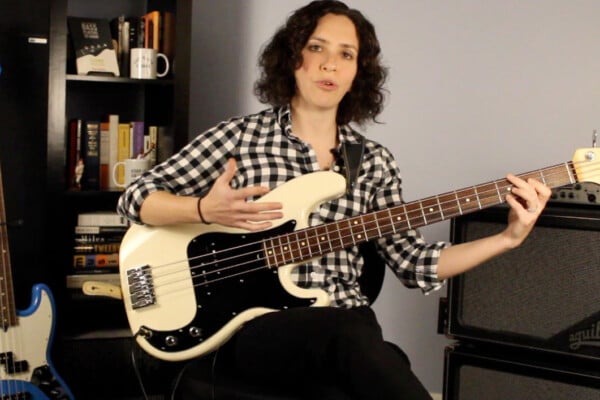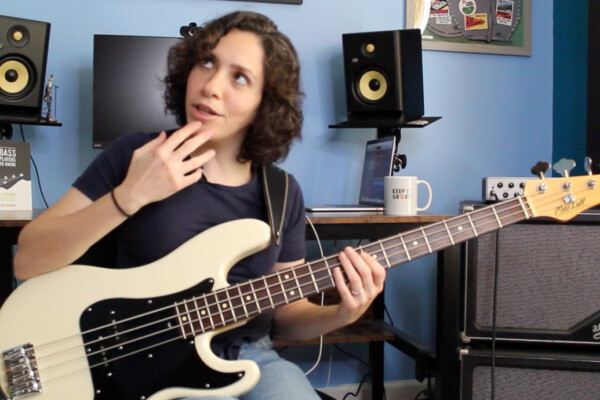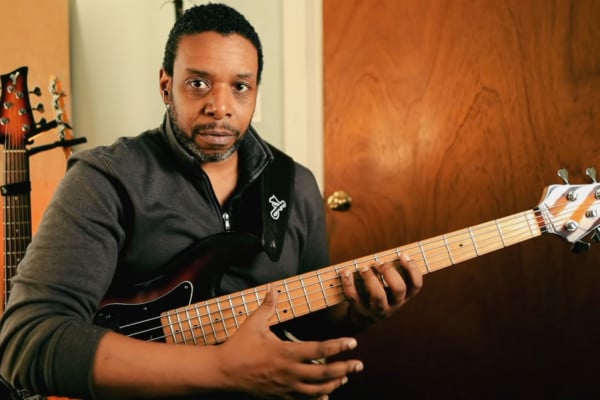Seven Planes of the Bow Arm
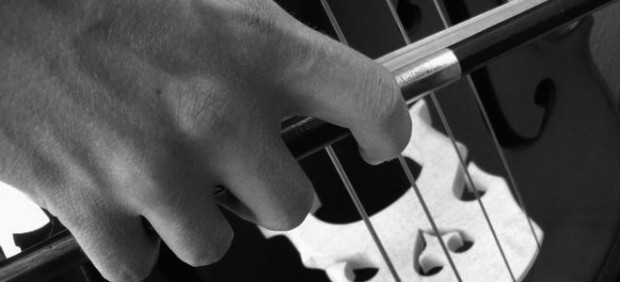
If we are aiming for a consistent sound, the shape of our bow arm should be the same no matter which string, or combination of strings, we are playing on. To do this, we must raise or lower our arm, depending upon which string, or combination of strings, we are playing on. For example, while the shape of our bowing arm should remain the same no matter the string we are playing on, our arm will be further from our torso when playing on the G string than when on the E string.
To get a bit more specific, there are seven basic geometric “planes” in which we move our bow arm that correspond to the string or strings we are playing on. There is one plane for each string of the bass, and one each for the three double stop combinations, E-A, A-D, and D-G. This is a foundational aspect of bowing technique. As such, we can benefit from reviewing it at each practice session.
I suggest open string exercises for this. You should make your own, and you can make them as complicated or as simple as you like. I keep them fairly short and simple in my own sessions. For years I played the exercise on p. 7 of Simandl’s “New Method Bk. 1.” More recently I have simplified it to the exercise below. Although I do other open string exercises, the short exercise below is where I focus on the 7 planes of my bow arm.
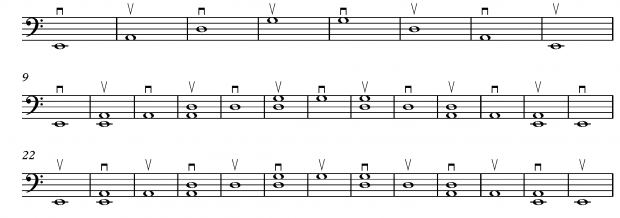
Using full bows for each note, I play this at least once at the beginning of my practice sessions.
The keys to benefiting from this simple exercise is focusing on:
- Which plane you are placing your bow arm in
- Keeping the shape of your bow are consistent for each plane
- Noting how your arm feels in each plane
- How far your elbow is from your torso for each plane
- As well as how your arm feels at different points in the bow for each plane (e.g. at the frog, at the middle, and at the tip)
- Using minimum effort to move your arm from one plane to the other (focusing on smooth motions)
- Not over shooting, or under shooting, the distance from one plane to the next
- Moving the arm smoothly, and at the appropriate speed, between string changes, (i.e. planes), so that there is no “gap” in tone between string changes and so the attack is controlled and immediate
- Making the necessary adjustments in weight, as well as wrist and finger motion, so that the sound is consistent throughout the length of the bow
After spending a few minutes playing this exercise, you should find your bow control more nuanced for the remainder of your session. Once you get the hang of things, it is not generally necessary to spend a great deal of time each day on such exercises, a few minutes each session will generally keep things in order.
Dr. Donovan Stokes is on the faculty of Shenandoah University-Conservatory. Visit him online at www.donovanstokes.com and check out the Bass Coalition at www.basscoalition.com.

